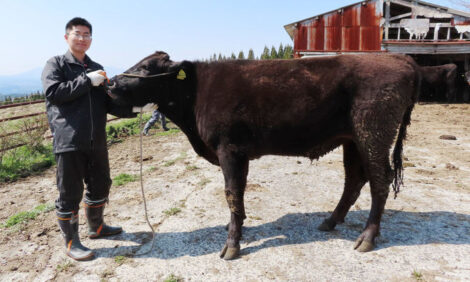



Dairy Outlook: July 2010
Milk production continues to advance despite declining cow numbers on a yearly basis; it is production per cow that boosts overall output. More milk both this year and next will limit price increases for dairy products, even though demand both globally and domestically continues to strengthen. Imports are forecast to decline while exports climb in 2010. Stocks will tighten more next year.Feed prices have been favourable for producers this year compared with last. Although corn and soybean meal prices are expected to average higher for the 2010/11 crop year, the increases are expected to be moderate. Corn prices are forecast to be $3.45 to $4.05 a bushel in the 2010/11 crop year. Likewise, soybean meal prices are likely to rise slightly in 2010/11 to $240-$280 a ton. The milk-feed price ratio has risen since 2009 and will likely average about 2.3 for the current year. Given the outlook for feed and milk prices, the ratio will remain nearly the same in 2011. Although producer returns have improved over 2009, the improvement is not enough to result in higher average cow numbers this year or next. Cow numbers are expected to average 9.1 million head this year and be about the same next year. According to the June Milk Production report, monthly cow numbers have increased fractionally since the first of the year but still trail yearearlier levels. Meanwhile, milk per cow continues to trend upward on a year-overyear basis. The increased output per cow will more than offset reduced herd size this year, resulting in more milk. Production in 2010 is forecast at 191.2 billion pounds. Next year, the forecast decline in cow numbers is expected to slow even further and production per cow is expected to be closer to trend, rising 1.6 per cent year-over-year. The result is an estimated 193.5 billion pounds of milk in 2011.
Economic recovery is continuing apace in Asia and South America and coupled with weaker production in Oceania has tightened global diary product supplies. However, prices were lower at the most recent world Dairy Trading auction. According to Dairy Market News, seasonally strong production in Northern Hemisphere countries and optimism for the upcoming season in Australia and New Zealand pushed down prices. The lower auction prices may have anticipated greater global supplies in the coming year. US. Milk equivalent exports are projected to reach 5.3 billion pounds in 2010 and 5.1 billion pounds next year on a fats basis. Exports on a skims-solids basis are expected to climb to 26.3 billion pounds this year and rise to 27.3 billion pounds in 2011. The skims-solids export forecasts are in the range of 2008 export totals after last year’s falloff. Correspondingly, US imports will be lower this year. Milk equivalent imports are projected at 4.5 billion pounds on a fats basis and 4.6 billion pounds on a skimssolids basis this year. Imports are forecast to rise slightly to 4.7 billion pounds on a fats basis and 4.8 billion pounds on a skims-solids basis in 2011.
The most recent Cold Storage report shows butter stocks at the end of May at 16 per cent below year-earlier levels and total cheese stocks are 5 per cent ahead of a year ago. The relatively higher cheese stocks and relatively low butter stocks compared with last year are contributing to butter prices being higher than cheese prices. The July Dairy Products report shows May end-of-month nonfat dry milk (NDM) stocks at 26 per cent below year-earlier levels.
Fats-basis domestic commercial use is projected to rise by 1.3 per cent in 2010 and by another 1.5 per cent in 2011. A rise in domestic commercial use is likely on a skims-solids basis as well, but the increase is expected to be a moderate 0.1 per cent in 2010 and 0.9 per cent in 2011.
The rise in domestic use and exports will draw down stocks. On a milk-equivalent basis, ending commercial stocks are expected to tighten both this year and next, and on both a fats- and skims-solids basis. The drawdown in stocks on a skims-solids basis is expected to be more pronounced next year than in 2010.
The current situation has Class IV prices above Class III prices, a reflection of the tightness in fat availability. Lower fat tests have boosted butter prices and may have helped firm up cheese prices as well. This situation should correct itself early in 2011. Prices for the major dairy products, except butter, are expected to rise slightly next year. Cheese prices are expected to average $1.465-$1.495 per pound in 2010 and $1.520-$1.620 per pound in 2011. Butter prices are forecast to average $1.530-$1.590 this year and $1.400-$1.530 per pound next year. NDM prices are expected to average $1.195-$1.225 per pound this year and $1.235-$1.305 in 2011. Whey prices are forecast to average 36.5-38.5 cents per pound in 2010 and 37.5- 40.5 cents in 2011.
Class IV milk prices are forecast to average $14.65-$15.05 per cwt this year and increase slightly to $14.40-$15.50 per cwt, in 2011. The Class III price is projected to average $13.80-$14.10 per cwt in 2010 and climb to $14.40-$15.40 per cwt in 2011. The all-milk price is expected to average $15.80-$16.10 per cwt in 2010, with a rise to $15.90-$16.90 in 2011.


